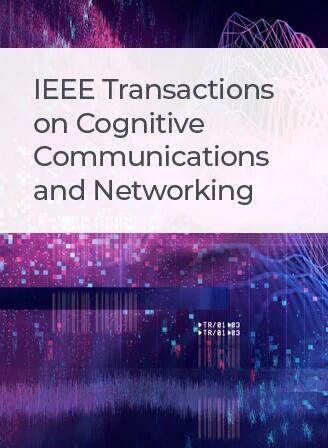基于分层深度强化学习的合作式联合睡眠和功率控制在 RIS 辅助高能效 RAN 中的应用
IF 7.4
1区 计算机科学
Q1 TELECOMMUNICATIONS
IEEE Transactions on Cognitive Communications and Networking
Pub Date : 2024-07-29
DOI:10.1109/TCCN.2024.3435850
引用次数: 0
摘要
本文章由计算机程序翻译,如有差异,请以英文原文为准。
Cooperative Hierarchical Deep Reinforcement Learning-Based Joint Sleep and Power Control in RIS-Aided Energy-Efficient RAN
Energy efficiency (EE) is one of the most important metrics for envisioned 6G networks, and sleep control, as a cost-efficient approach, can significantly lower power consumption by switching off network devices selectively. Meanwhile, the reconfigurable intelligent surface (RIS) has emerged as a promising technique to enhance the EE of future wireless networks. In this work, we jointly consider sleep and transmission power control for RIS-aided energy-efficient networks. In particular, considering the timescale difference between sleep control and power control, we introduce a cooperative hierarchical deep reinforcement learning (Co-HDRL) algorithm, enabling hierarchical and intelligent decision-making. Specifically, the meta-controller in Co-HDRL uses cross-entropy metrics to evaluate the policy stability of sub-controllers, and sub-controllers apply the correlated equilibrium to select optimal joint actions. Compared with conventional HDRL, Co-HDRL enables more stable high-level policy generations and low-level action selections. Then, we introduce a fractional programming method for RIS phase-shift control, maximizing the sum-rate under a given transmission power. In addition, we proposed a low-complexity surrogate optimization method as a baseline for RIS control. Finally, simulations show that the RIS-assisted sleep control can achieve more than 16% lower energy consumption and 30% higher EE than baseline algorithms.
求助全文
通过发布文献求助,成功后即可免费获取论文全文。
去求助
来源期刊

IEEE Transactions on Cognitive Communications and Networking
Computer Science-Artificial Intelligence
CiteScore
15.50
自引率
7.00%
发文量
108
期刊介绍:
The IEEE Transactions on Cognitive Communications and Networking (TCCN) aims to publish high-quality manuscripts that push the boundaries of cognitive communications and networking research. Cognitive, in this context, refers to the application of perception, learning, reasoning, memory, and adaptive approaches in communication system design. The transactions welcome submissions that explore various aspects of cognitive communications and networks, focusing on innovative and holistic approaches to complex system design. Key topics covered include architecture, protocols, cross-layer design, and cognition cycle design for cognitive networks. Additionally, research on machine learning, artificial intelligence, end-to-end and distributed intelligence, software-defined networking, cognitive radios, spectrum sharing, and security and privacy issues in cognitive networks are of interest. The publication also encourages papers addressing novel services and applications enabled by these cognitive concepts.
 求助内容:
求助内容: 应助结果提醒方式:
应助结果提醒方式:


